Bridges are marvels of engineering and design, connecting cities, countries, and cultures. They stand as symbols of human ingenuity and perseverance. Here are some of the most iconic bridges around the world, each with its unique story and significance.
Golden Gate Bridge, USA
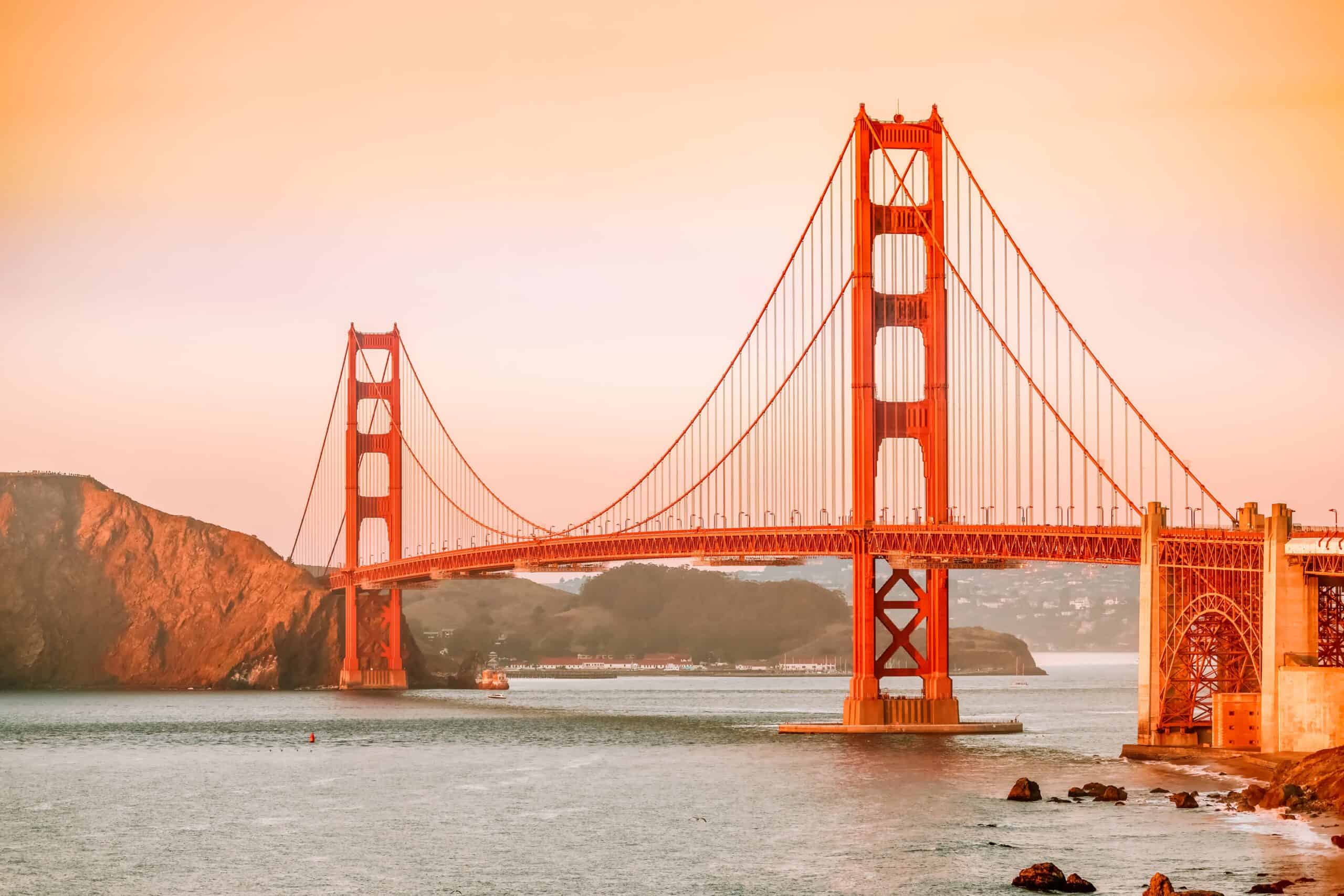
The Golden Gate Bridge, completed in 1937, is an engineering masterpiece in San Francisco, California. Spanning 1.7 miles, it connects the city to Marin County. Its stunning Art Deco design and international orange color make it a global icon. Designed by Joseph Strauss, the bridge’s construction faced challenges from strong tides, swirling fog, and high winds. The Golden Gate Bridge remains a symbol of American innovation and resilience, attracting millions of visitors annually.
Tower Bridge, UK
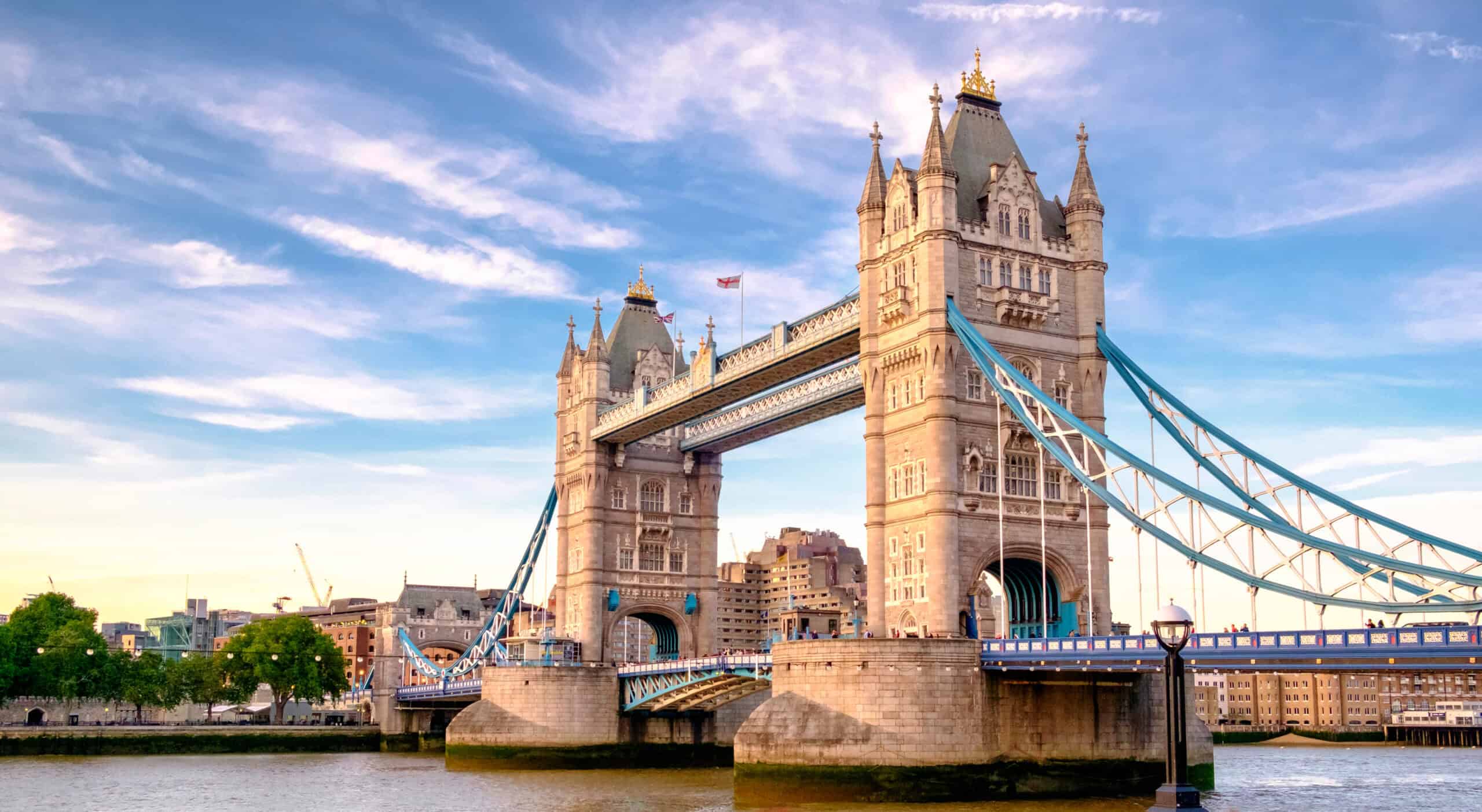
Tower Bridge, completed in 1894, is a marvel of Victorian engineering in London. Its two majestic towers are linked by high-level walkways, providing spectacular views of the Thames. The bridge’s bascule design allows it to open for river traffic. Designed by Sir Horace Jones and engineered by Sir John Wolfe Barry, it remains a symbol of London’s rich history and architectural prowess. The bridge has also featured prominently in films, adding to its global recognition.
Sydney Harbour Bridge, Australia
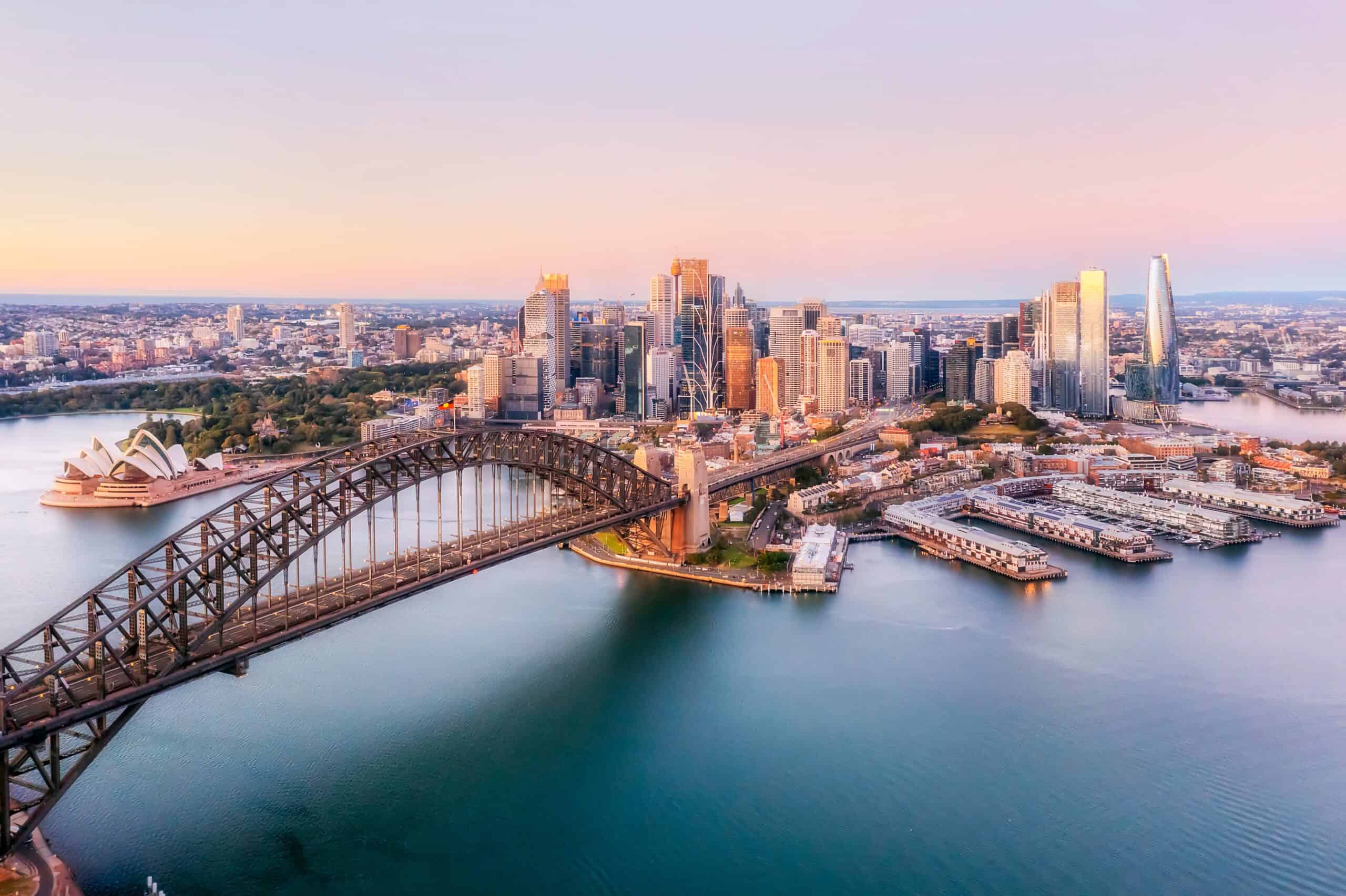
Sydney Harbour Bridge, affectionately known as “The Coathanger,” opened in 1932. It connects Sydney’s central business district to the North Shore. The steel arch bridge is an iconic feature of Sydney’s skyline. Built by Dorman Long and Co Ltd, the bridge required 52,800 tonnes of steel. BridgeClimb offers adventurous visitors a chance to scale its heights for panoramic city views. Its annual New Year’s Eve fireworks display is a global spectacle.
Brooklyn Bridge, USA
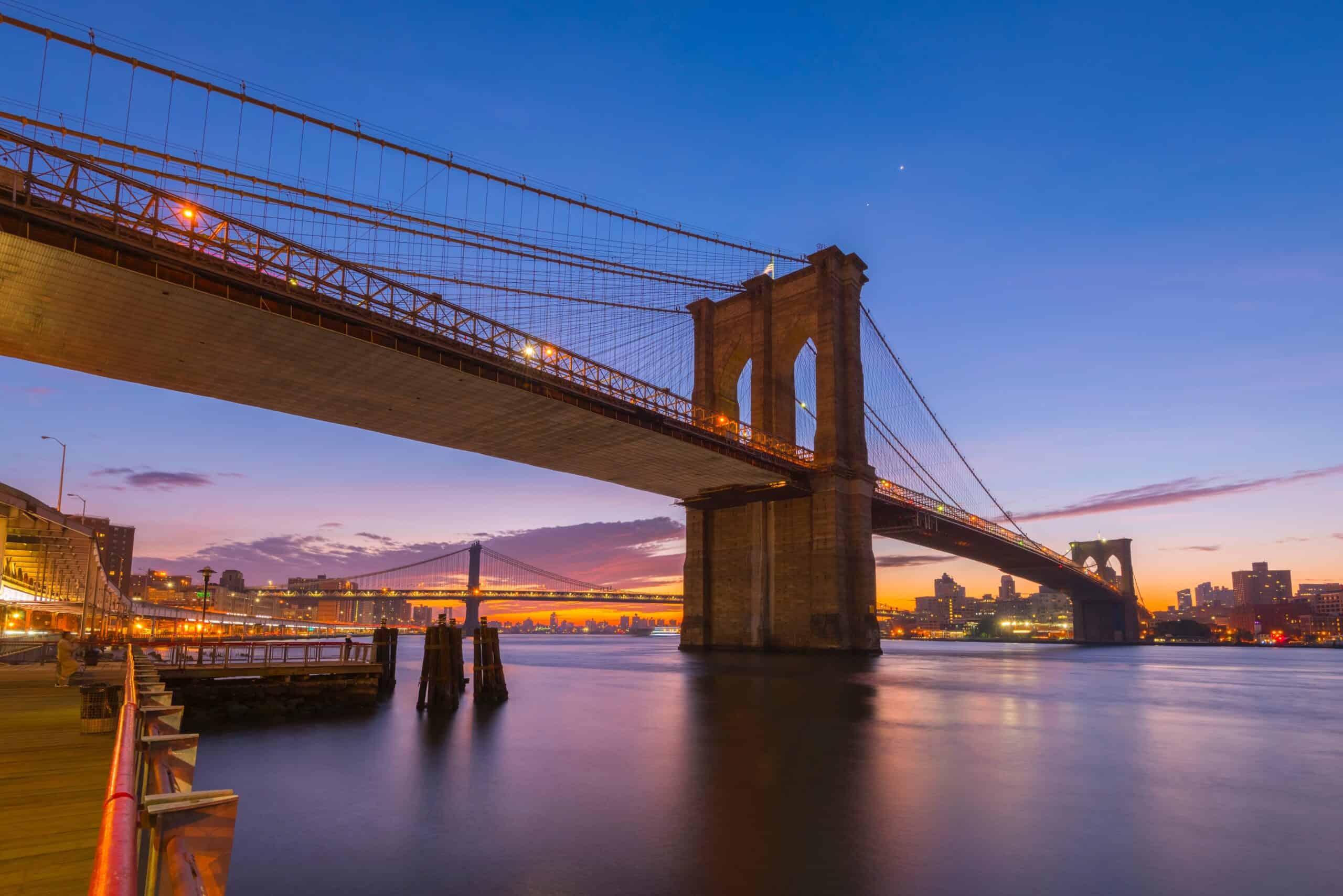
Brooklyn Bridge, completed in 1883, links Manhattan and Brooklyn across the East River. It was the world’s longest suspension bridge at the time, with a span of 1,595 feet. Designed by John A. Roebling and completed by his son Washington Roebling, the bridge’s Gothic-style towers and steel cables are instantly recognizable. The Brooklyn Bridge remains a vital part of New York City’s landscape and history, symbolizing urban development and human determination.
Millau Viaduct, France
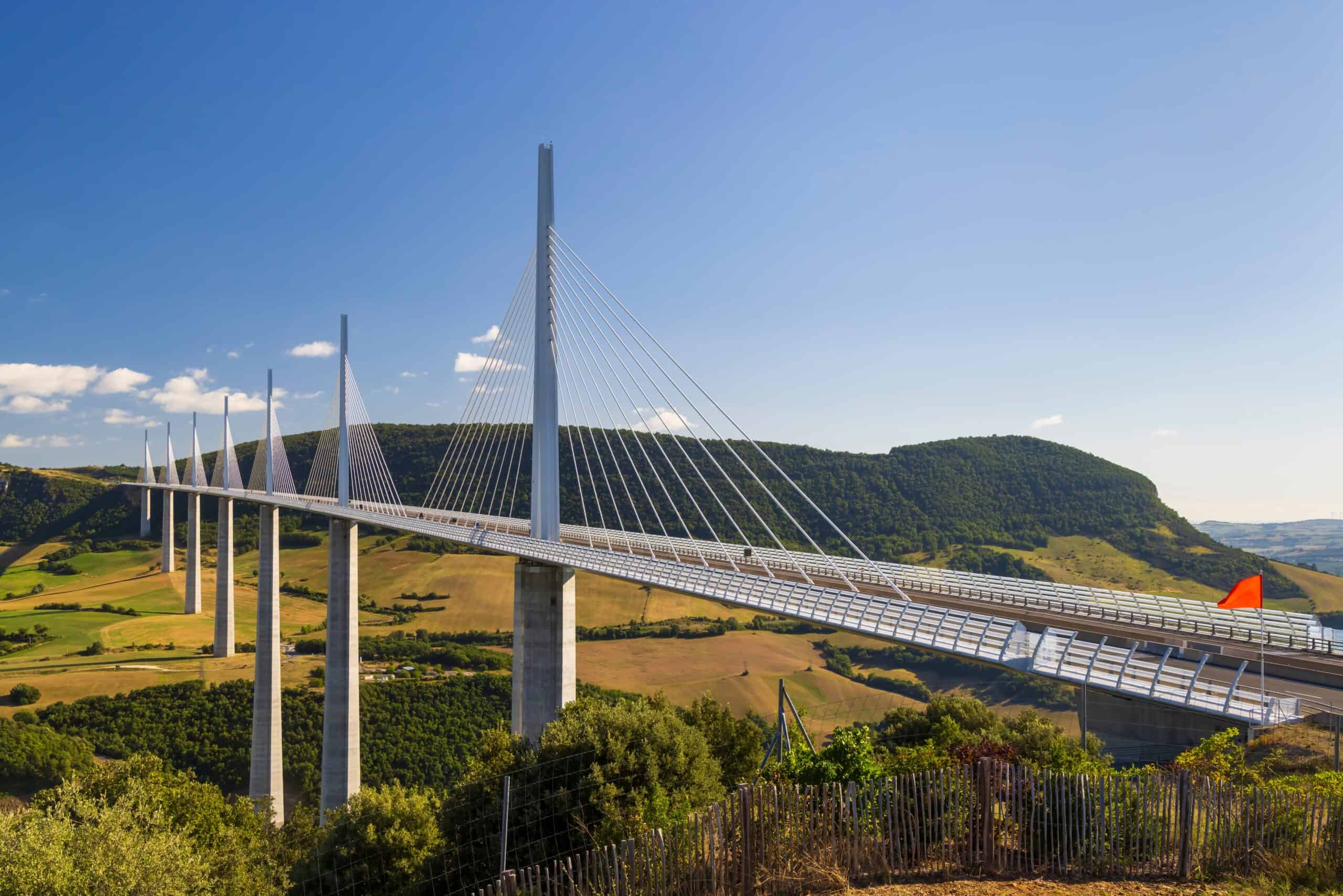
The Millau Viaduct, completed in 2004, soars over the Tarn River Valley in southern France. Designed by Norman Foster and engineered by Michel Virlogeux, it is the tallest bridge in the world, with a height of 1,125 feet. Its sleek, cable-stayed design blends seamlessly with the landscape. The Millau Viaduct exemplifies modern engineering and aesthetic beauty, earning numerous awards and attracting tourists for its breathtaking views.
Rialto Bridge, Italy
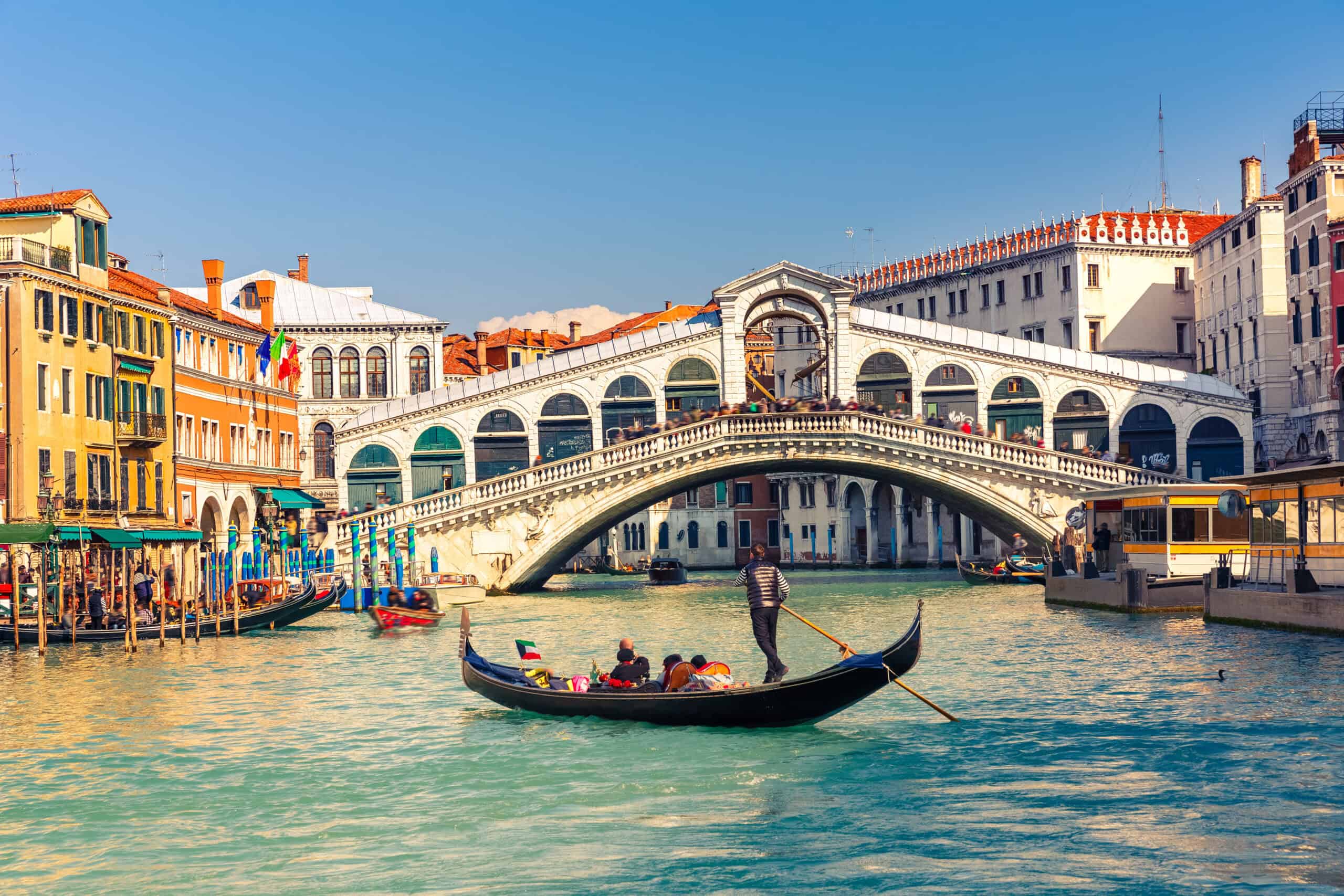
Rialto Bridge, built in 1591, is Venice’s oldest bridge across the Grand Canal. Its elegant stone arch and covered walkway are timelessly beautiful. Designed by Antonio da Ponte, the bridge has been a vital commercial hub for centuries. It remains a bustling spot, connecting the districts of San Polo and San Marco. The Rialto Bridge is not only a functional structure but also a historical and cultural landmark, surrounded by vibrant markets and shops.
Charles Bridge, Czech Republic
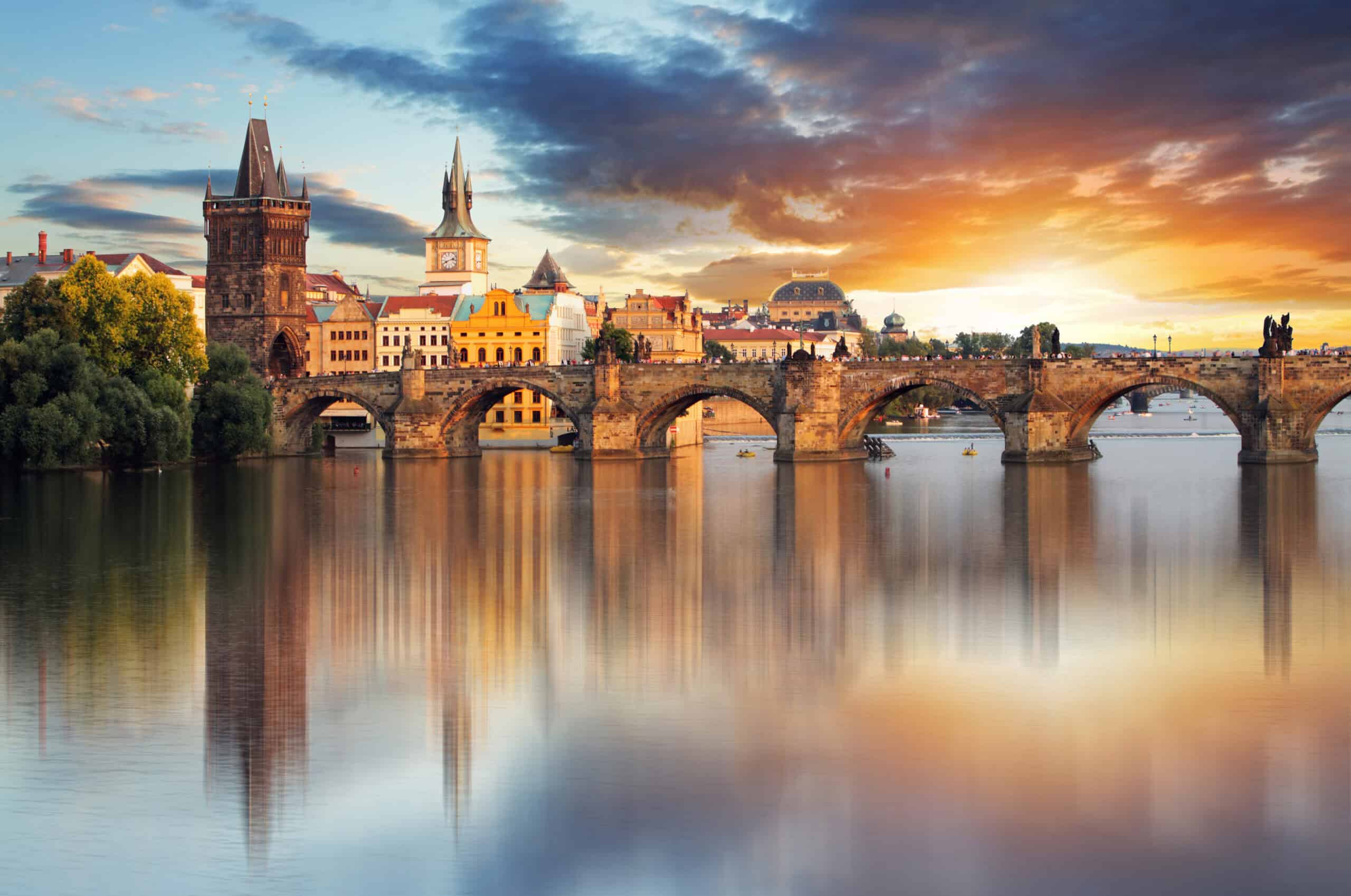
Charles Bridge, constructed in 1357, spans the Vltava River in Prague. Its Gothic towers and 30 Baroque statues make it a historical treasure. Commissioned by King Charles IV and completed by architect Peter Parler, the bridge connects the Old Town with Prague Castle, offering stunning city views. Charles Bridge has been a focal point of Prague’s culture and history for centuries, hosting artists, musicians, and lively markets.
Akashi Kaikyō Bridge, Japan
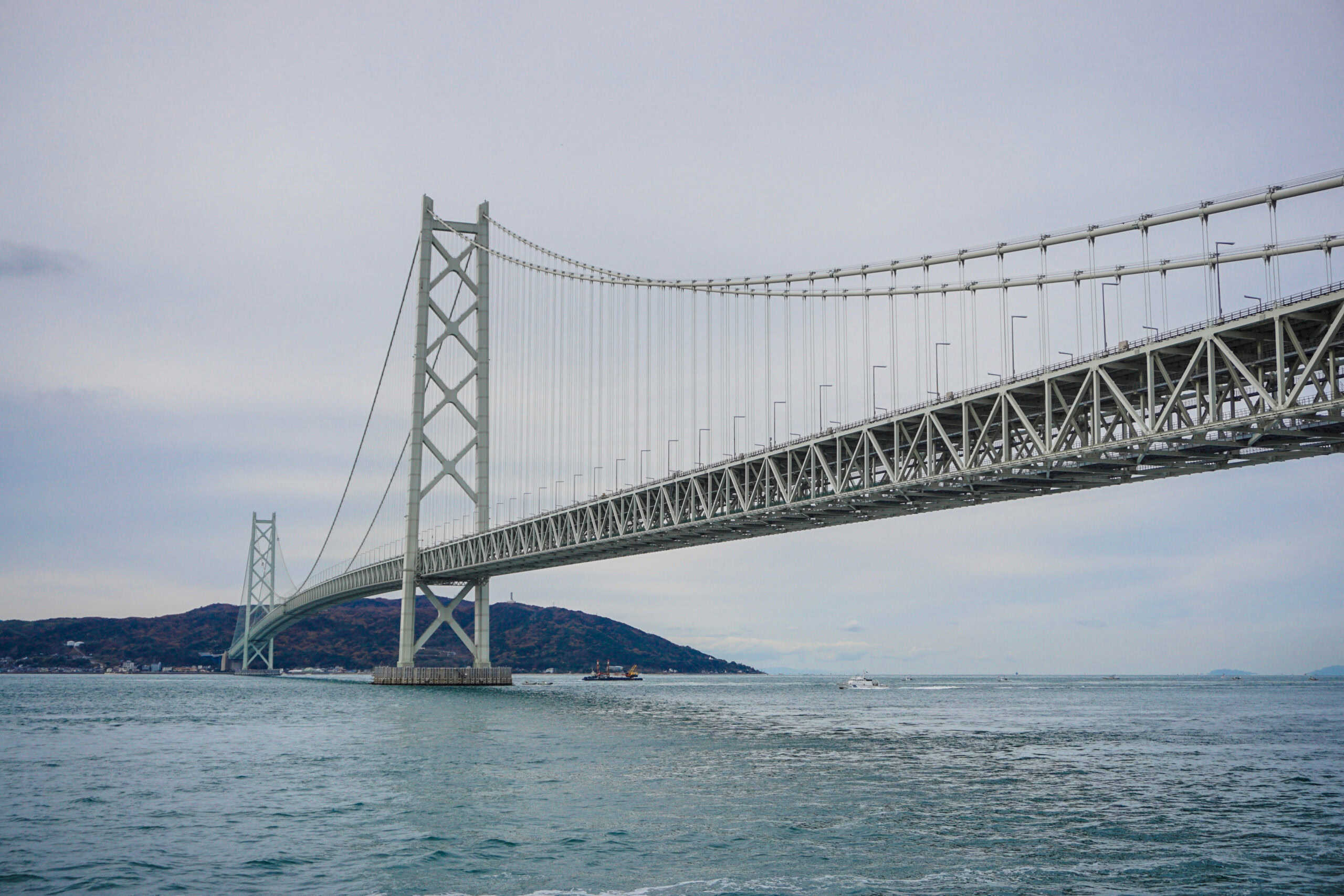
Akashi Kaikyō Bridge, completed in 1998, connects Kobe to Awaji Island. It is the world’s longest suspension bridge, with a central span of 6,532 feet. The bridge was designed to withstand earthquakes and typhoons. Engineered by the Honshu-Shikoku Bridge Authority, the bridge’s construction faced challenges from strong currents and seismic activity. Its impressive size and resilience are testaments to Japan’s engineering excellence, playing a crucial role in transportation and disaster preparedness.
Ponte Vecchio, Italy
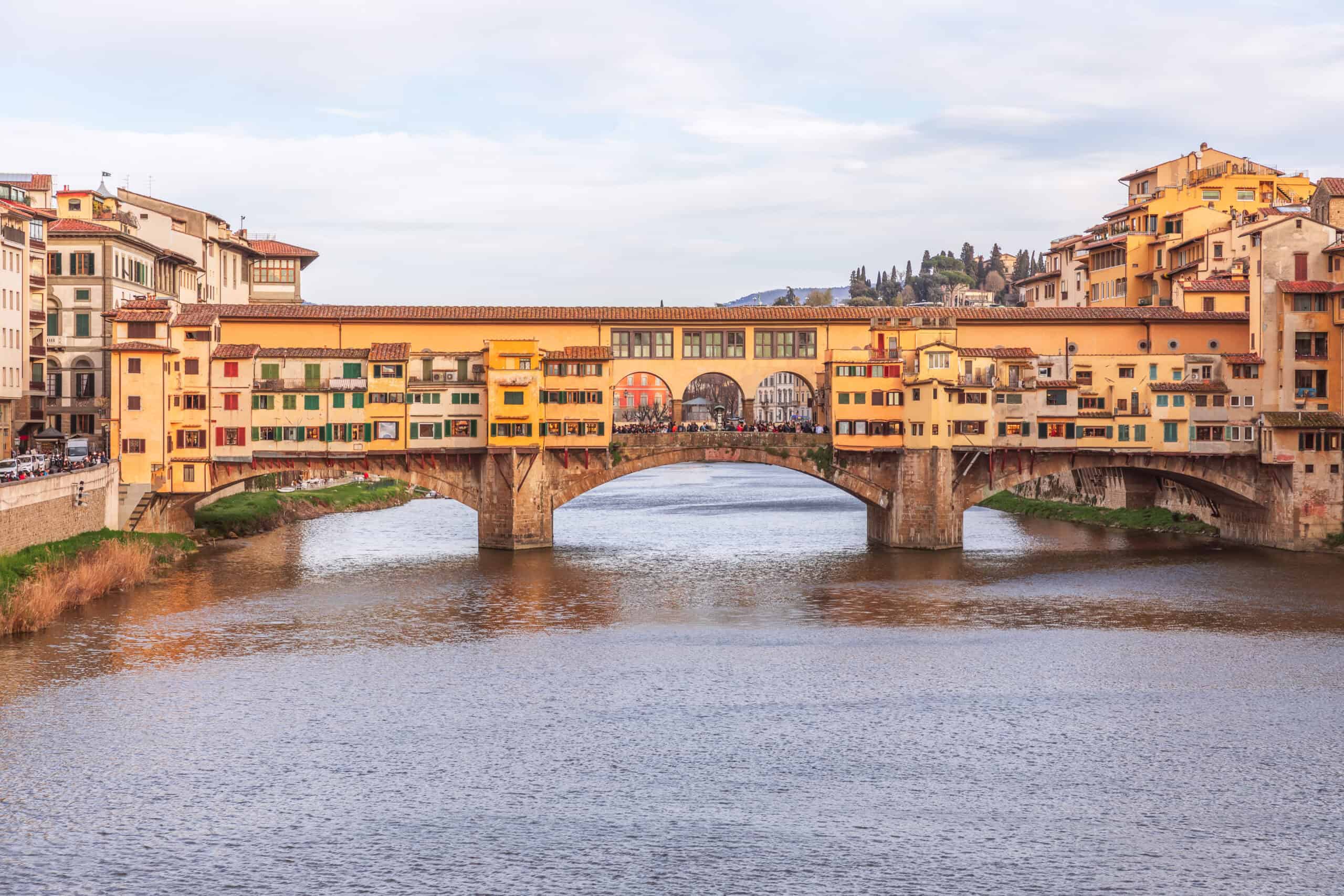
Ponte Vecchio, built in 1345, spans the Arno River in Florence. It is renowned for its shops, which have housed merchants since the Middle Ages. Originally home to butchers, the shops now feature jewelers, art dealers, and souvenir sellers. The bridge’s design includes three arches and a picturesque row of buildings. In 1565, Vasari Corridor was added, providing a passageway for the Medici family to move between their residences. Ponte Vecchio is a testament to Florence’s architectural and commercial history, surviving World War II intact when other bridges in the city were destroyed.
Helix Bridge, Singapore
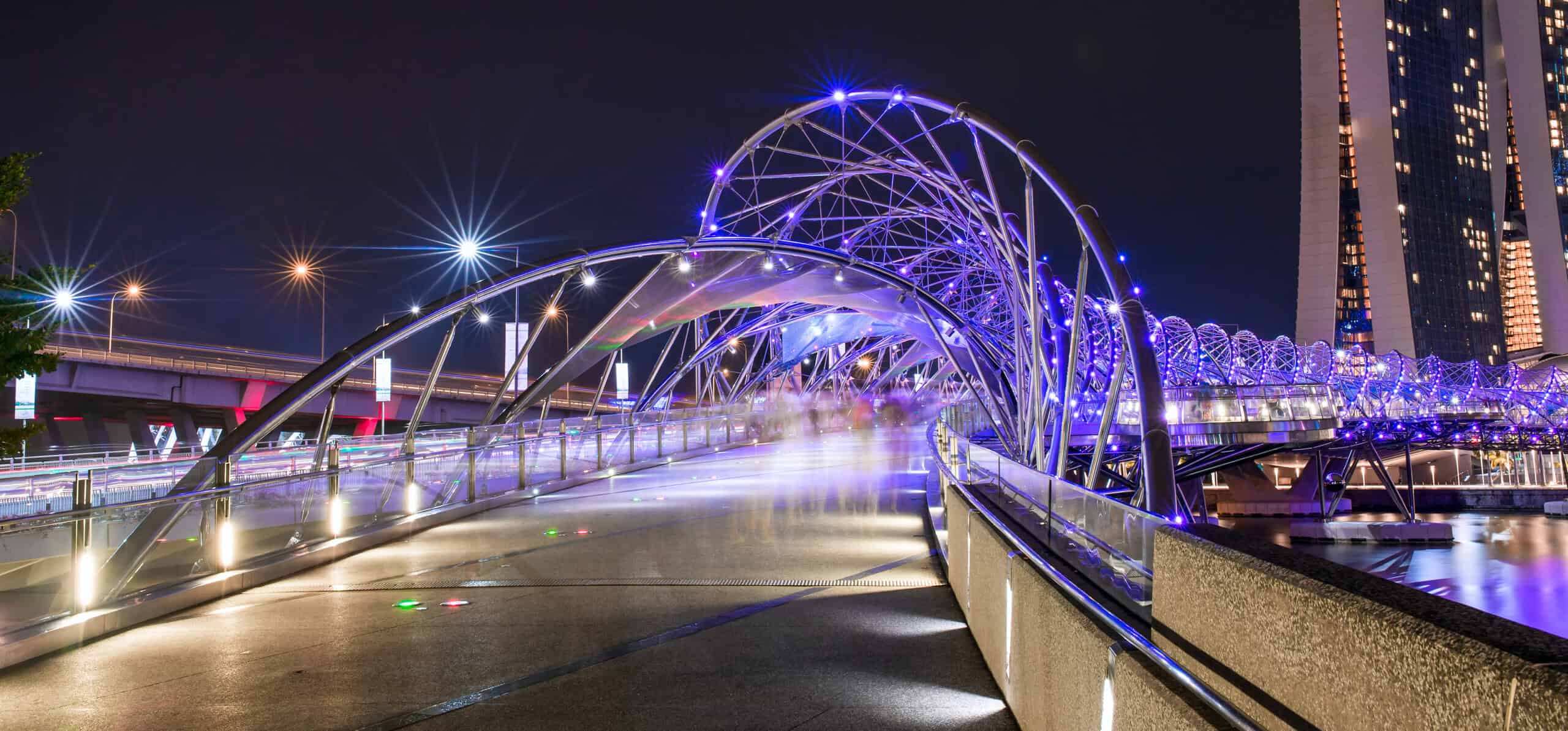
Helix Bridge, opened in 2010, is a pedestrian bridge linking Marina Centre with Marina South in Singapore. Its design, inspired by the double helix structure of DNA, features a unique curved form made of stainless steel. The bridge is illuminated with LED lights, creating a stunning visual effect at night. It features four viewing platforms, offering spectacular views of the Singapore skyline and events at Marina Bay. This modern marvel symbolizes Singapore’s commitment to innovative and sustainable design, winning several architectural awards.
Forth Bridge, Scotland
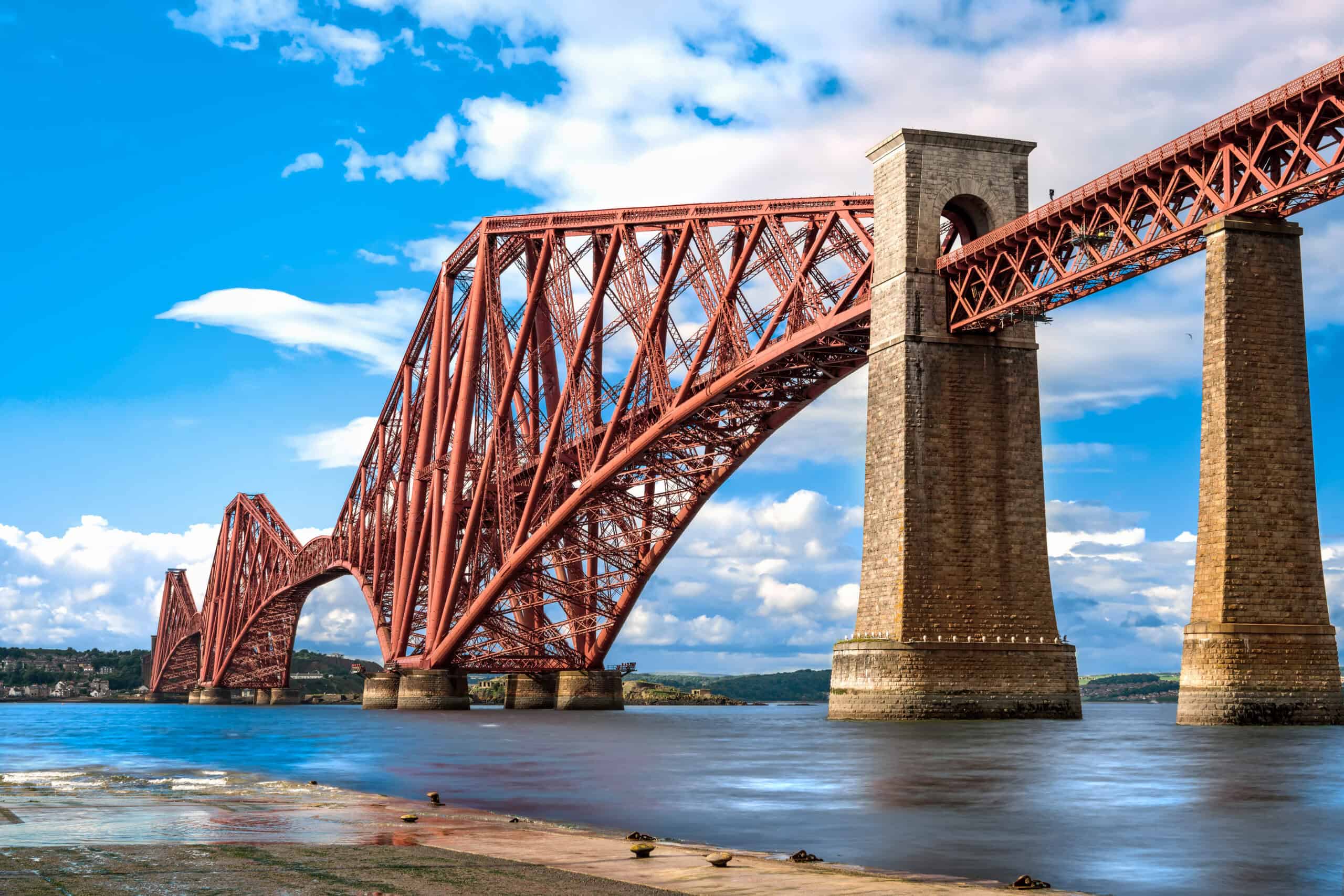
Forth Bridge, completed in 1890, is a cantilever railway bridge over the Firth of Forth. It connects Edinburgh to Fife, spanning 1.5 miles. Designed by engineers Sir John Fowler and Sir Benjamin Baker, its construction involved 53,000 tonnes of steel. The bridge’s distinctive red steel structure has become a symbol of Scottish engineering prowess. It was designated a UNESCO World Heritage Site in 2015, recognizing its historical and architectural significance. The Forth Bridge is a vital transport link and a beloved landmark.
Stari Most, Bosnia and Herzegovina
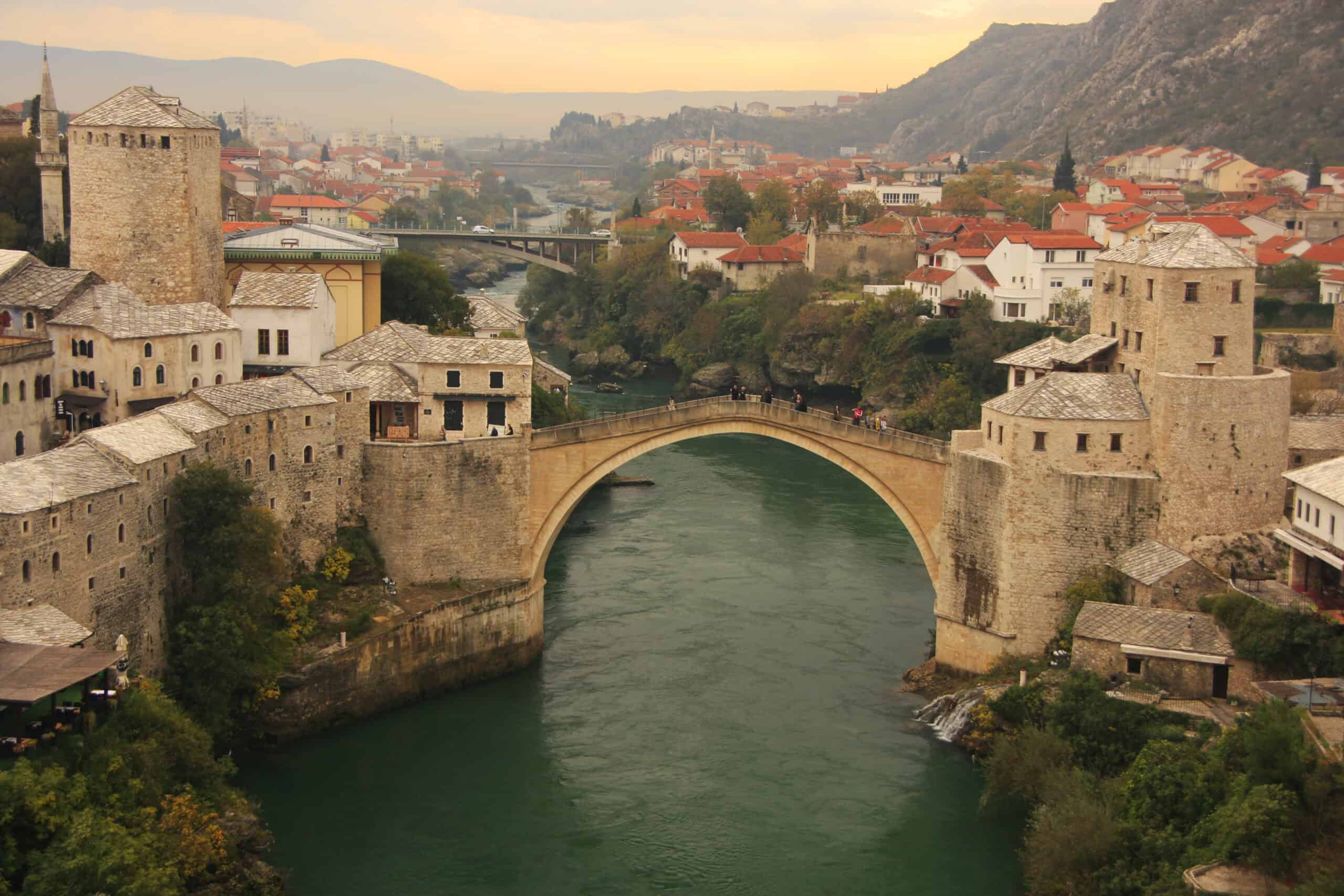
Stari Most, originally built in 1566, spans the Neretva River in Mostar. The bridge was destroyed during the Bosnian War but was meticulously rebuilt and reopened in 2004. Its elegant arch design represents the Ottoman architectural influence in the region. Stari Most stands 24 meters high and was a popular diving spot for locals and tourists. The reconstruction was a UNESCO-led effort, symbolizing the bridge’s role in cultural heritage and reconciliation. Stari Most is a symbol of resilience and cultural heritage, attracting visitors worldwide.
Sunshine Skyway Bridge, USA
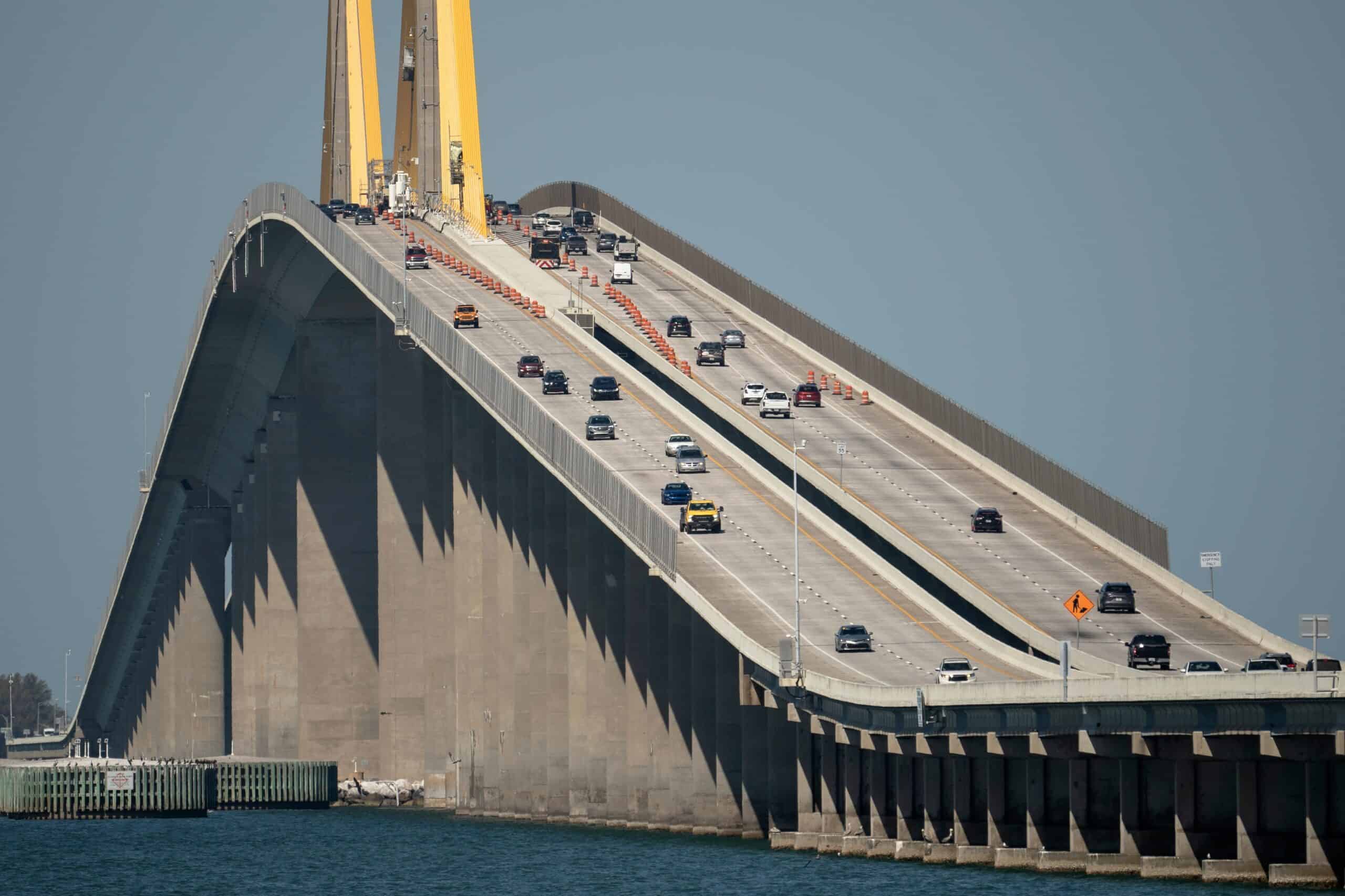
Sunshine Skyway Bridge, completed in 1987, connects St. Petersburg to Terra Ceia in Florida. It spans 4.1 miles across Tampa Bay, featuring a striking cable-stayed design with a central span of 1,200 feet. The bridge replaced an older structure that was partially destroyed in a ship collision. Designed with state-of-the-art engineering techniques, it includes features to withstand hurricanes and other severe weather conditions. Sunshine Skyway Bridge stands as a testament to modern engineering and safety innovations, offering scenic views of the bay.
Hangzhou Bay Bridge, China
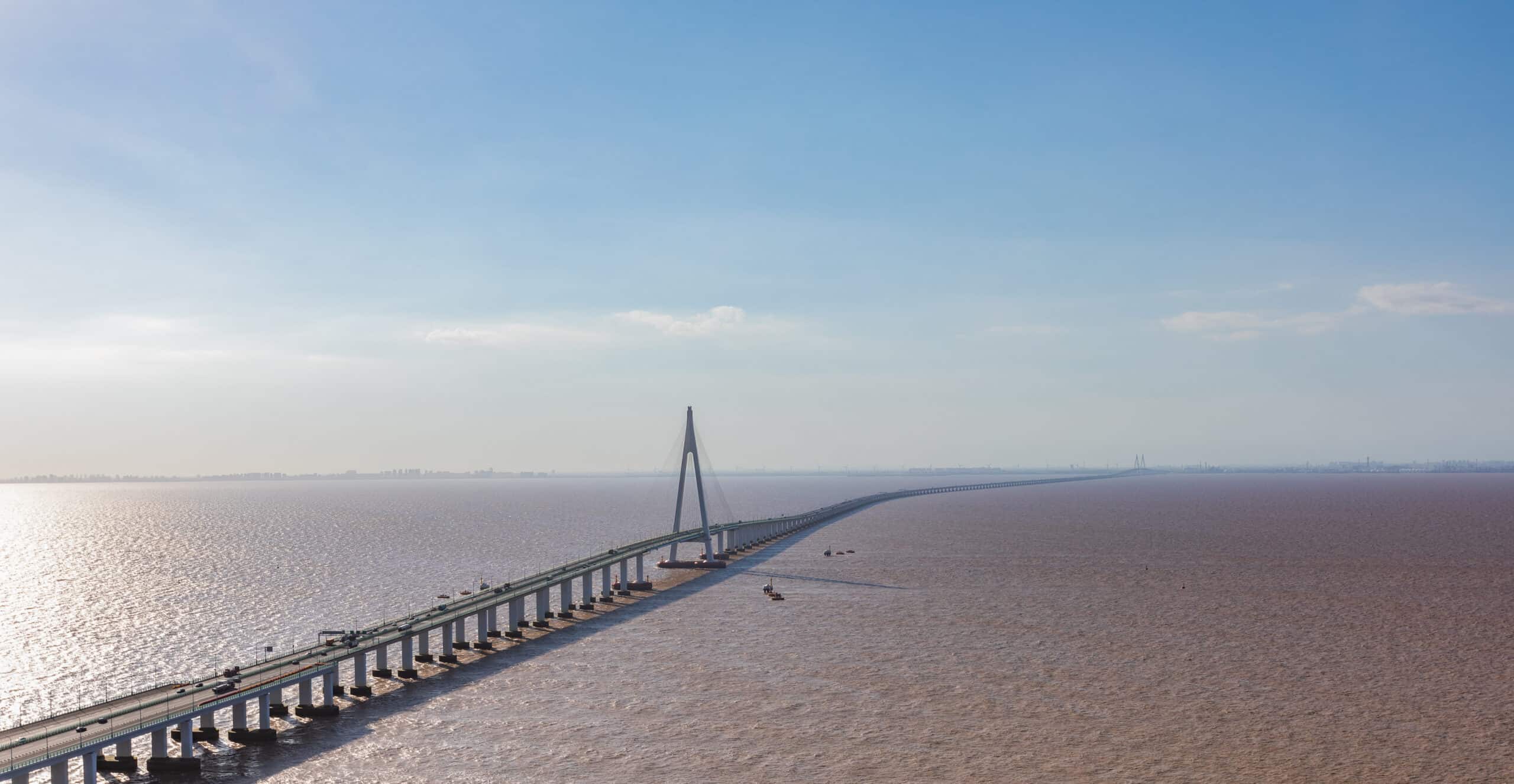
Hangzhou Bay Bridge, opened in 2008, spans 22 miles across Hangzhou Bay. It connects the cities of Jiaxing and Ningbo, significantly reducing travel time between them from four hours to just two. The bridge’s S-shaped design helps mitigate the strong tidal forces in the bay and includes wind barriers to ensure safety. With six lanes, it serves both vehicular and emergency traffic. Hangzhou Bay Bridge is one of the longest trans-oceanic bridges in the world, showcasing China’s engineering capabilities and contributing significantly to regional economic growth.
Si-o-se-pol, Iran
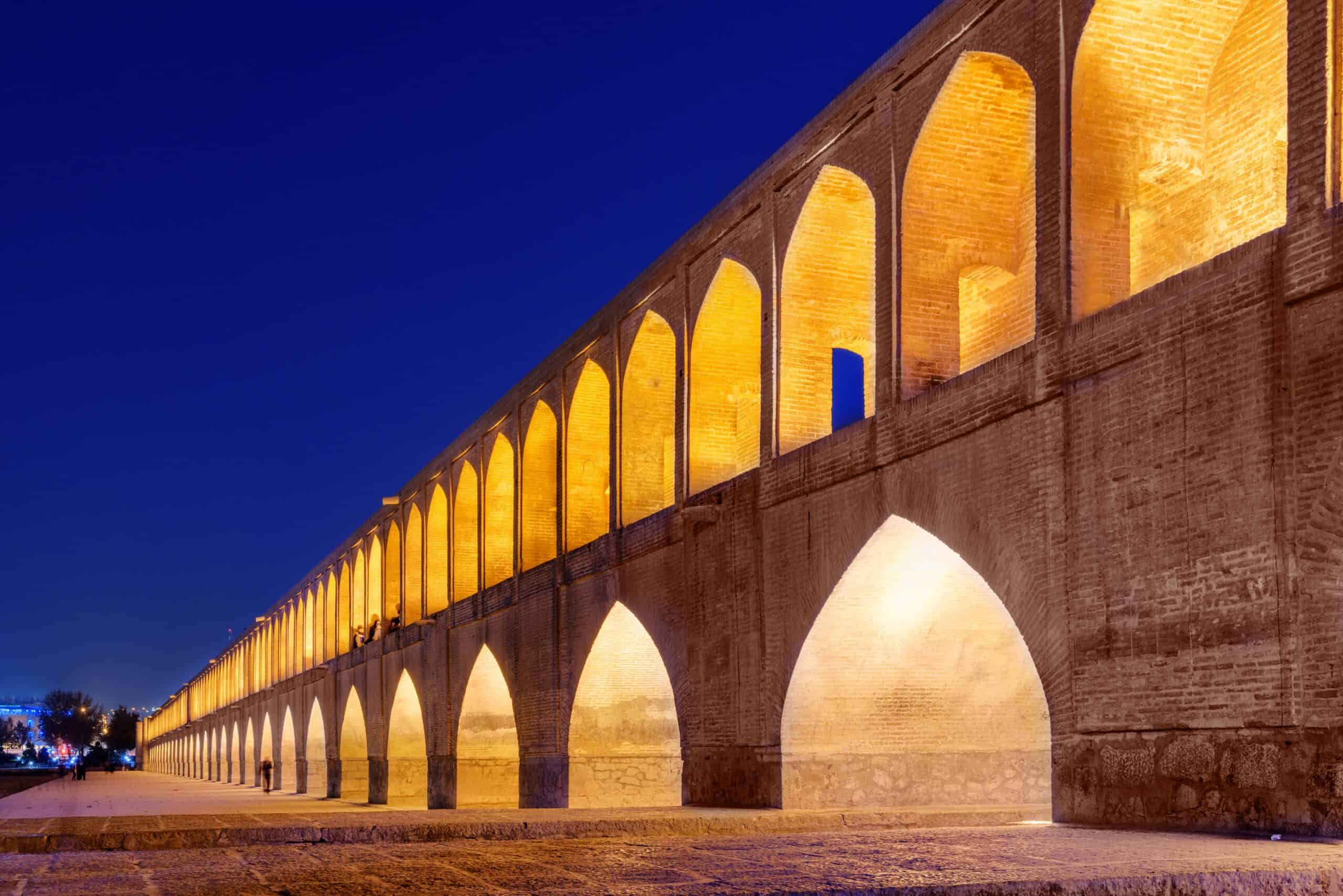
Si-o-se-pol, built in 1602, spans the Zayanderud River in Isfahan. Its name means “Bridge of 33 Arches,” reflecting its distinctive architectural feature. Commissioned by Shah Abbas I, the bridge serves both as a bridge and a dam, regulating water flow. Measuring 297 meters in length, it is one of the longest bridges in Iran. Si-o-se-pol is a masterpiece of Safavid architecture, featuring two levels of arcades and serving as a venue for public events and celebrations. It represents Iran’s rich cultural heritage and engineering ingenuity, attracting numerous visitors and scholars.
Coronado Bridge, USA

Coronado Bridge, completed in 1969, spans San Diego Bay, connecting San Diego to Coronado Island. Its striking curved design measures 2.1 miles in length, with a height clearance of 200 feet to allow naval ships to pass beneath. The bridge’s five-lane structure makes it a vital transportation link in the area. The bridge is not just functional but also offers panoramic views of the bay and city skyline.
Alcántara Bridge, Spain
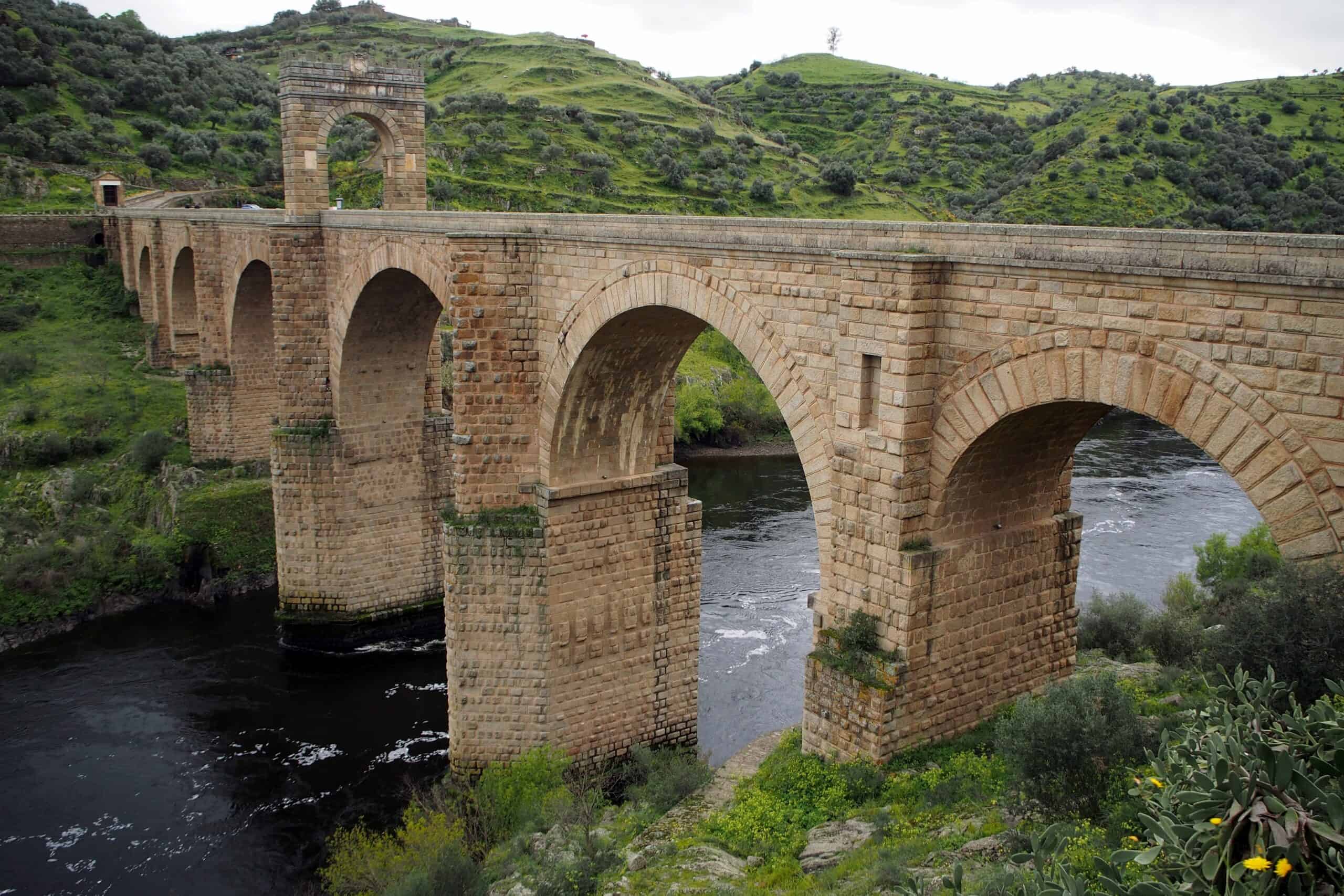
Alcántara Bridge, built between 104 and 106 AD, spans the Tagus River in Alcántara, Spain. Constructed by the Romans, this ancient bridge stands as a testament to Roman engineering prowess. The stone arch bridge features six arches and a central triumphal arch, dedicated to Emperor Trajan. Remarkably, the bridge has survived numerous wars and natural disasters, retaining much of its original structure.
Juscelino Kubitschek Bridge, Brazil
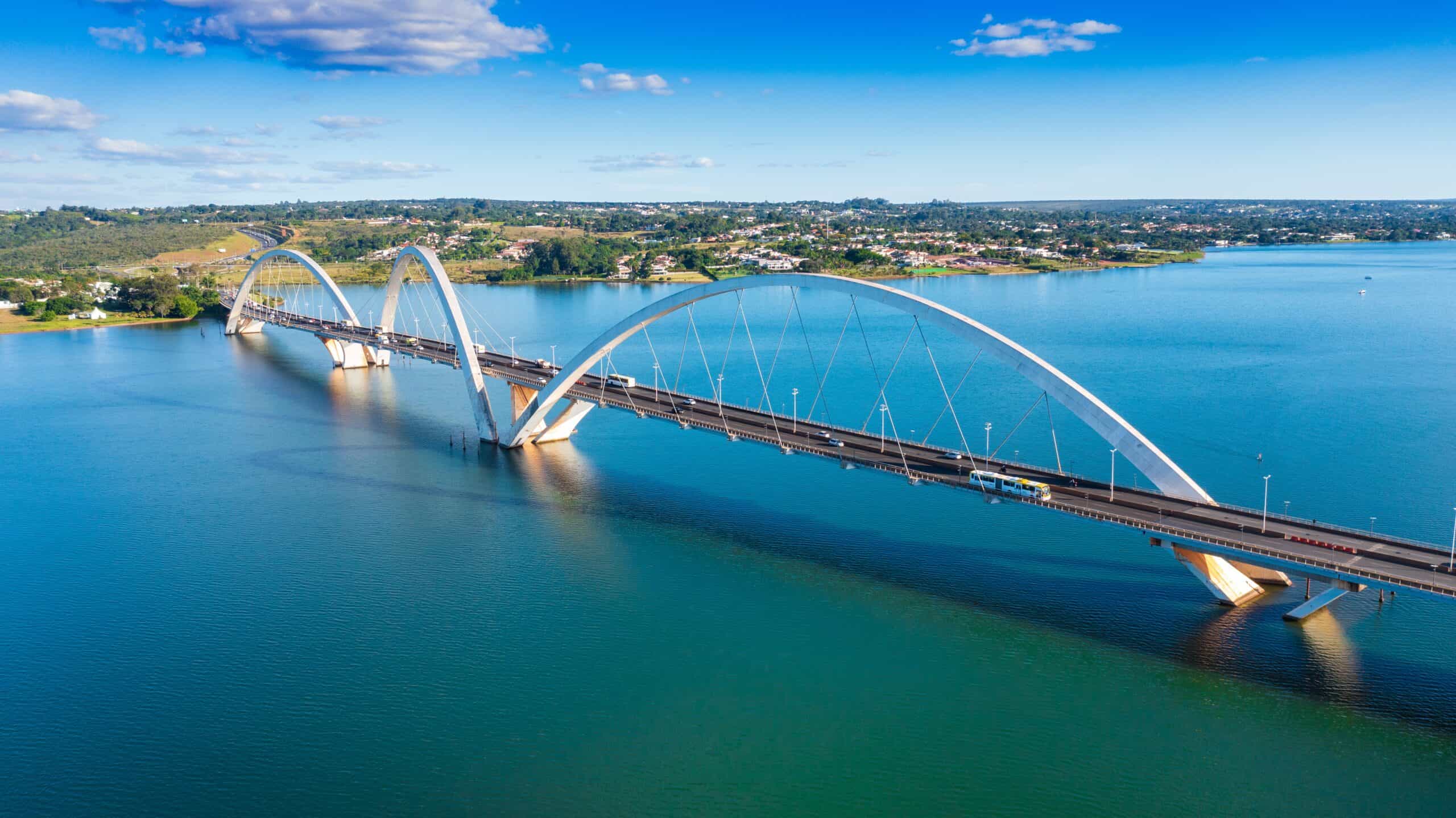
Juscelino Kubitschek Bridge, also known as JK Bridge, was completed in 2002 in Brasília, Brazil. The bridge spans Lake Paranoá, connecting the city center with the eastern residential areas. Its unique design features three large steel arches that cross over the roadway, creating a dynamic and graceful structure. The bridge is named after Juscelino Kubitschek, the former president of Brazil who founded Brasília. JK Bridge is not only a key transportation route but also a striking architectural landmark.
Vasco da Gama Bridge, Portugal
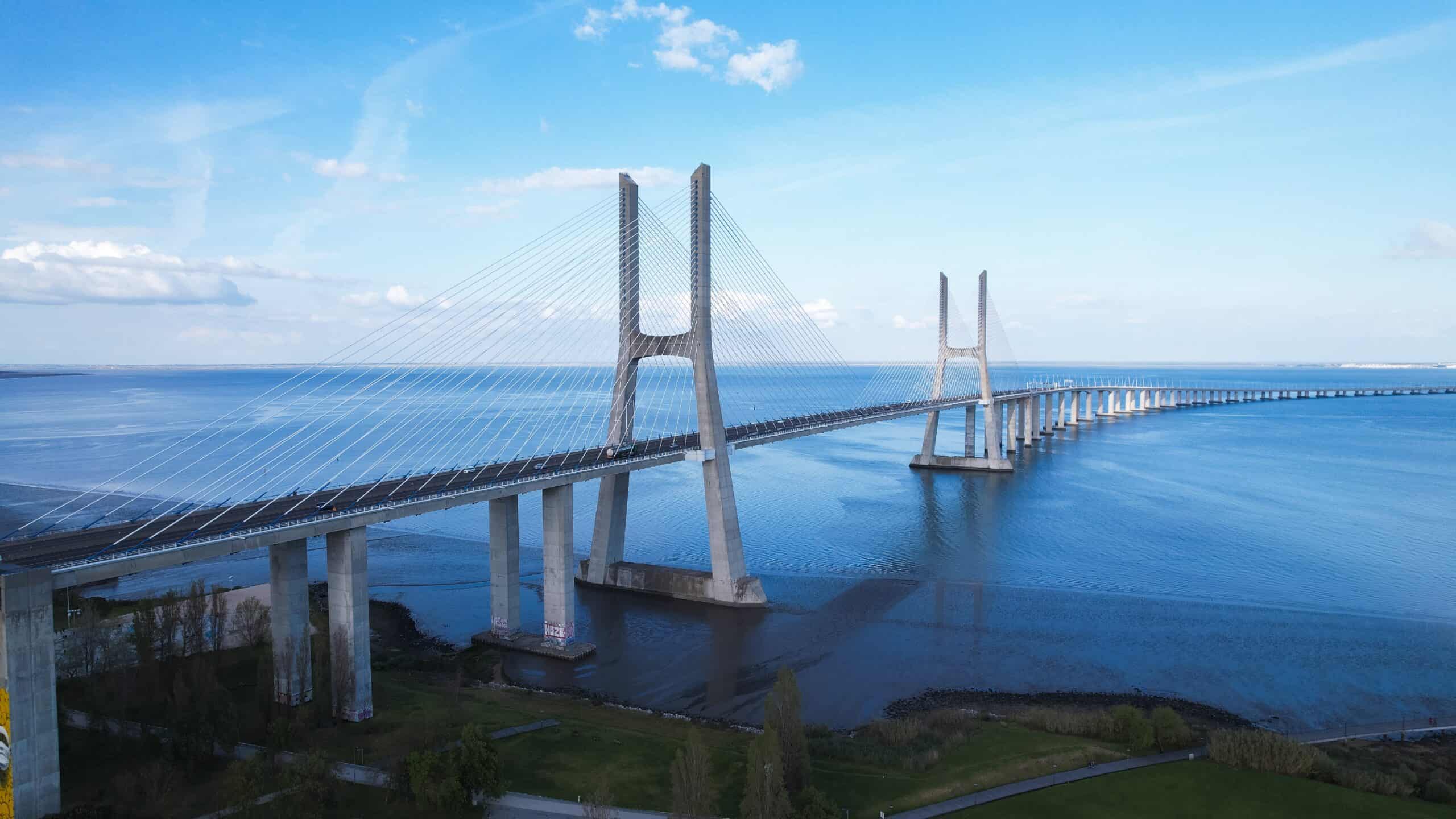
Vasco da Gama Bridge, completed in 1998, spans the Tagus River in Lisbon, Portugal. At 7.6 miles, it is the longest bridge in Europe, designed to alleviate traffic congestion in the city. The bridge’s cable-stayed design includes multiple spans and pylons, blending functionality with aesthetic appeal. Named after the famous explorer Vasco da Gama, the bridge commemorates the 500th anniversary of his voyage to India. It plays a crucial role in connecting northern and southern Portugal, supporting economic and social integration.
This article originally appeared on Rarest.org.
More from Rarest.org
1993 Washington Quarter Value Guide
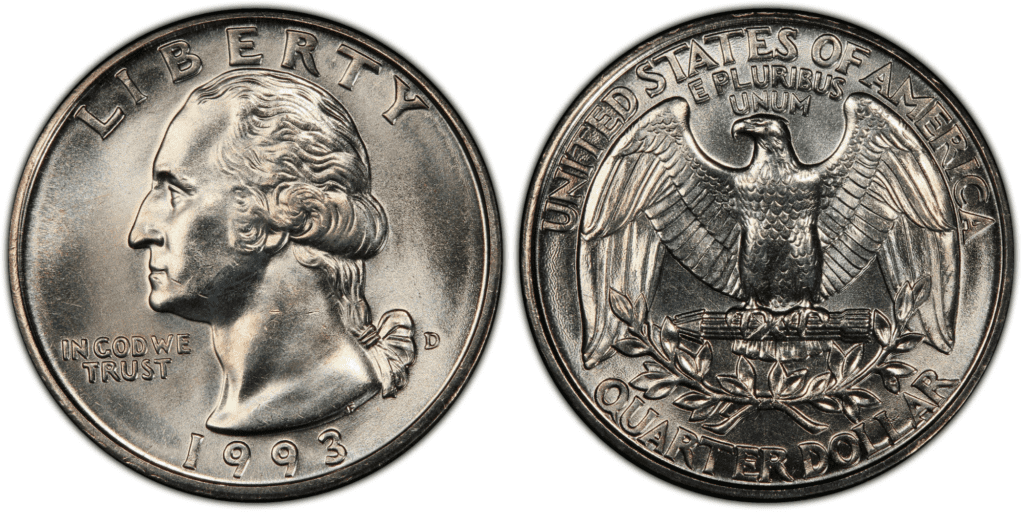
The 1993 Washington quarter is made of 91.67% copper and 8.33% nickel. There are also 1993 silver proof Washington quarter coins produced, which are made of 90% silver and 10% copper. Read More.
14 Most Exclusive Private Clubs in the World
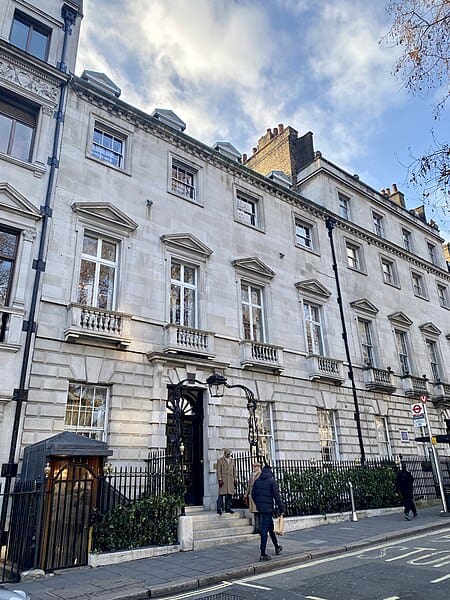
Exclusive private clubs around the world offer unparalleled luxury, privacy, and networking opportunities. Read More.
18 Oddest Artifacts Ever Discovered by Archaeologists

Archaeology has unearthed countless artifacts that offer glimpses into the lives and cultures of ancient civilizations. Read More.
